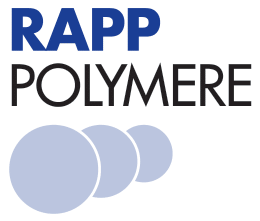TentaGel® TOPPA
€ 115,00*
S30902.012023.1G
Product information
TentaGel® resins are grafted copolymers consisting of a low crosslinked polystyrene matrix on which polyethylene glycol (PEG or POE) is grafted via an ethyl ether group which increases stability towards acid treatment and minimizes PEG-leaching. The graft copolymer shows modified physicochemical properties which are highly dominated by the PEG moiety (and no longer by the polystyrene matrix) and has hydrophobic and hydrophilic properties. These copolymers are pressure stable and can be used in batch processes as well as under continuous flow conditions. The PEG spacer is in the range of MW 3000 Da. TentaGel® resins have high diffusion rates and excellent swelling in a wide range of solvents from e.g. toluene to water.
This resin type is based on a TentaGel® matrix and combines the very acid sensitive trityl handle with the acid sensitive Rink amide handle. The peptide synthesis can be performed by standard conditions. Treatment of the TOPPA resin with diluted AcOH, TFE or mixtures of both in dichloromethane cleaves the trityl ester bond and releases the total protected peptide amide (TOPPA). The C-terminus of the protected peptide amide is still masked by the Rink handle.
Literature
L 50 Total Protected Peptide Amides
- Backes, B. J.; Ellman, J. A. Carbon-Carbon Bond-Forming Methods on Solid Support. Utilization of Kenner’s “Safety-Catch” Linker. J. Am. Chem. Soc. 1994, 116 (24), 11171-11172. doi: 10.1021/ja00103a048.
- Holmes, C. P.; Jones, D. G. Reagents for Combinatorial Organic Synthesis: Development of a New o-Nitrobenzyl Photolabile Linker for Solid Phase Synthesis. J. Org. Chem. 1995, 60 (8), 2318-2319. doi: 10.1021/jo00113a004.
- Sieber, P. A New Acid-Labile Anchor Group for the Solid-Phase Synthesis of C-Terminal Peptide Amides by the Fmoc Method. Tetrahedron Lett. 1987, 28 (19), 2107-2110. doi: 10.1016/s0040-4039(00)96055-6.
- Gatos, D., & Tzavara, C. Comparison of the solid-phase fragment condensation and phase-change approaches in the synthesis of salmon I calcitonin. The Journal of Peptide Research. 2001, 57(2), 168–174. doi:10.1046/j.1397-002x.2000.00000_1.

